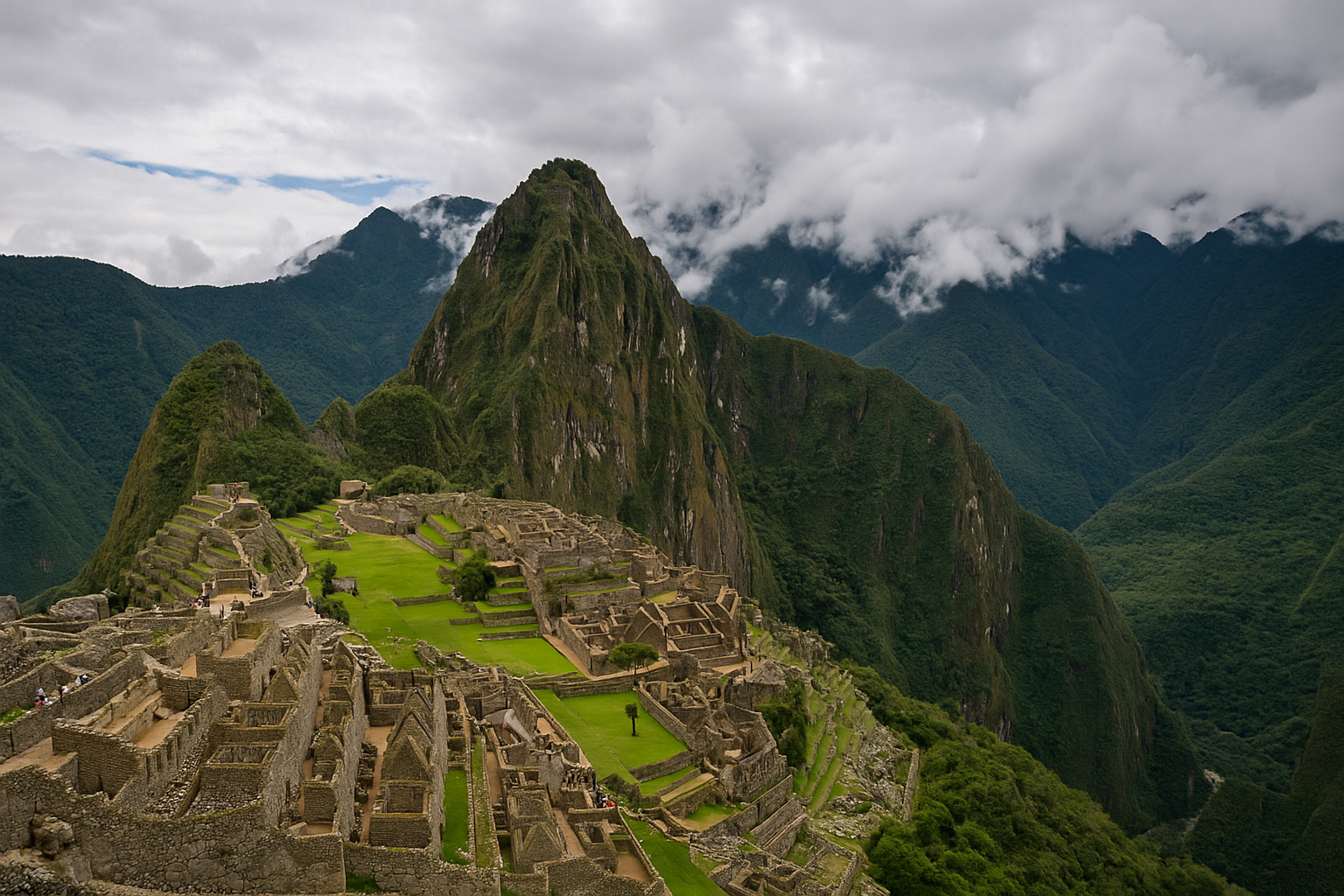South America, a continent of staggering diversity and endless wonder, beckons the curious traveler with its raw natural beauty, deep cultural roots, and unrivaled adventures. From the windswept glaciers of Patagonia to the equatorial rainforests of the Amazon, every corner holds a story—a vibrant mosaic of ancient civilizations, colonial legacies, thriving cities, and wild, untamed landscapes.
What sets South America apart is its ability to merge contrasts. Here, you can hike through thousand-year-old ruins in the morning and dance to pulsating rhythms under city lights at night. You can float across high-altitude lakes shimmering with starlight, then dive into warm Caribbean waters surrounded by coral reefs and jungle. It’s a continent where time slows down—and yet, every moment feels electric.
In crafting this curated list of the 27 best places to visit in South America in 2025, we’ve gone beyond the obvious. Drawing from firsthand travel experience, the latest research, and local insights, this guide aims to inspire a deeper exploration—balancing iconic landmarks like Machu Picchu and the Galápagos Islands with hidden gems such as Tayrona National Park and Colonia del Sacramento.
Whether you’re a cultural enthusiast, a nature lover, or an adrenaline seeker, this list of the 27 Best Places to Visit in South America offers more than just destinations—it offers transformative experiences. This article is your roadmap to uncovering those stories and planning a journey rooted in discovery, beauty, and depth.
Table of Contents
Natural Wonders of South America
South America is a continent sculpted by time and tectonics—its landscapes are nothing short of majestic. From salt flats that shimmer like glass to towering peaks and ancient lakes, this region is home to some of the most dramatic and pristine natural settings on Earth. What makes these destinations even more captivating is how intertwined they are with indigenous cultures and local lore, adding a layer of meaning to their visual grandeur.
Below are the most awe-inspiring natural wonders to include in your 2025 itinerary, each offering a once-in-a-lifetime experience for nature lovers and adventurers alike.
1. Salar de Uyuni, Bolivia
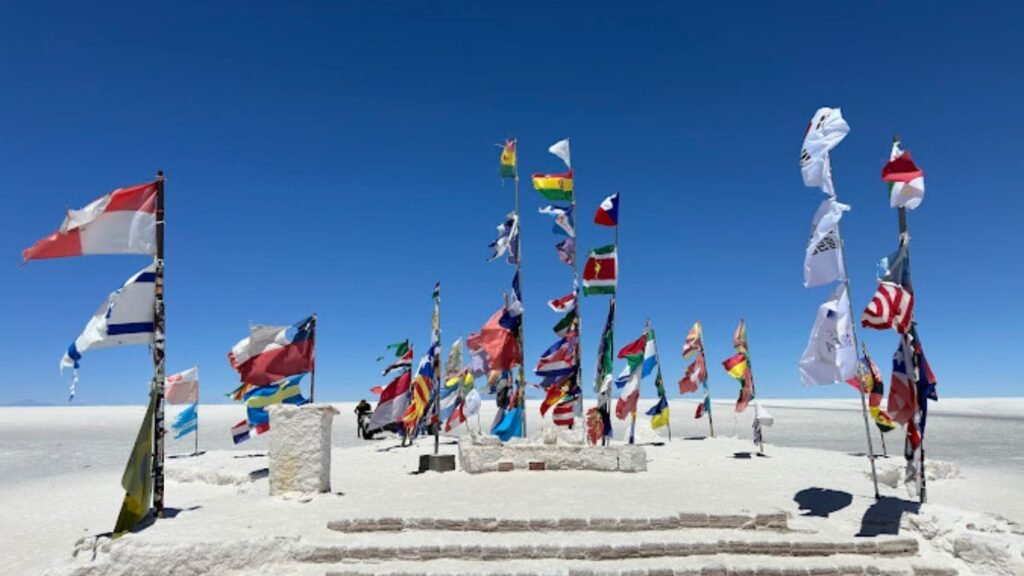
Stretching across more than 10,500 square kilometers, the Salar de Uyuni is the world’s largest salt flat—and arguably its most surreal. Formed from prehistoric lakes that evaporated centuries ago, it is a seemingly endless expanse of polygonal salt patterns in the dry season and a mirror of the sky during the rainy season (December to April). The reflection effect during this time creates a dreamlike sensation of walking on clouds.
Visitors typically begin their journey in the remote town of Uyuni, joining multi-day 4×4 excursions that traverse this extraterrestrial landscape. Highlights include Incahuasi Island, dotted with towering cacti and offering panoramic views, and eerie train graveyards from Bolivia’s early industrial age.
Insider Tip: Pack sunglasses and sunscreen—light reflects harshly off the white salt, making the Salar incredibly bright during the day.
2. Mount Fitz Roy, Argentina

Rising dramatically from the Southern Patagonian Ice Field, Mount Fitz Roy is a granite monolith that challenges climbers and enthralls photographers. At 3,405 meters, it’s not the tallest peak in Argentina, but it is among the most iconic, thanks to its jagged profile and wild surroundings near the village of El Chaltén.
The Laguna de los Tres trail is the most popular trek and leads to an unforgettable vista of Fitz Roy reflected in glacial waters. Along the way, hikers traverse lenga forests, encounter condors riding thermal currents, and pass crystalline rivers sourced from melting ice.
Why It Matters: Patagonia’s pristine environment is under constant ecological pressure. Responsible tourism here supports conservation and local livelihoods—opt for eco-conscious lodges and guides.
3.The Amazon River
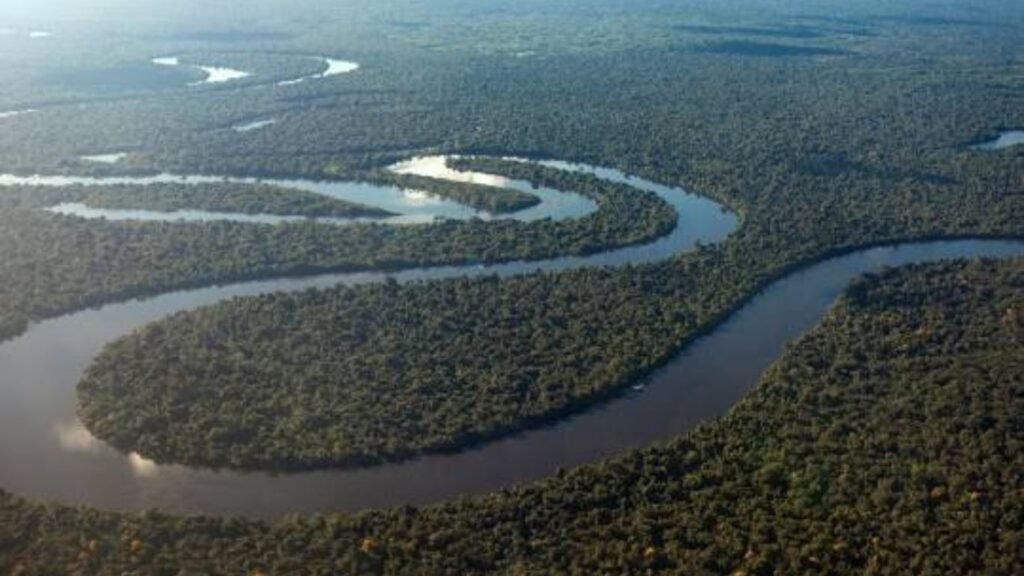
The Amazon River is more than a geographical marvel; it’s a living, breathing artery of the continent—spanning 6,400 kilometers and crossing nine countries. But it’s in Peru, Brazil, and Colombia where travelers can truly experience the Amazon’s untamed pulse.
River cruises and eco-lodges near Iquitos (Peru) or Manaus (Brazil) offer close encounters with the region’s rich biodiversity: pink river dolphins, capybaras, toucans, sloths, and elusive jaguars. Canoe through flooded forests, join a medicinal plant walk with a local shaman, or take part in a night safari to witness nocturnal species.
Travel Note: The Amazon is best visited in the dry-to-shoulder season (June–November), when boat access is easier and mosquito activity is lower.
4. Galápagos Islands, Ecuador
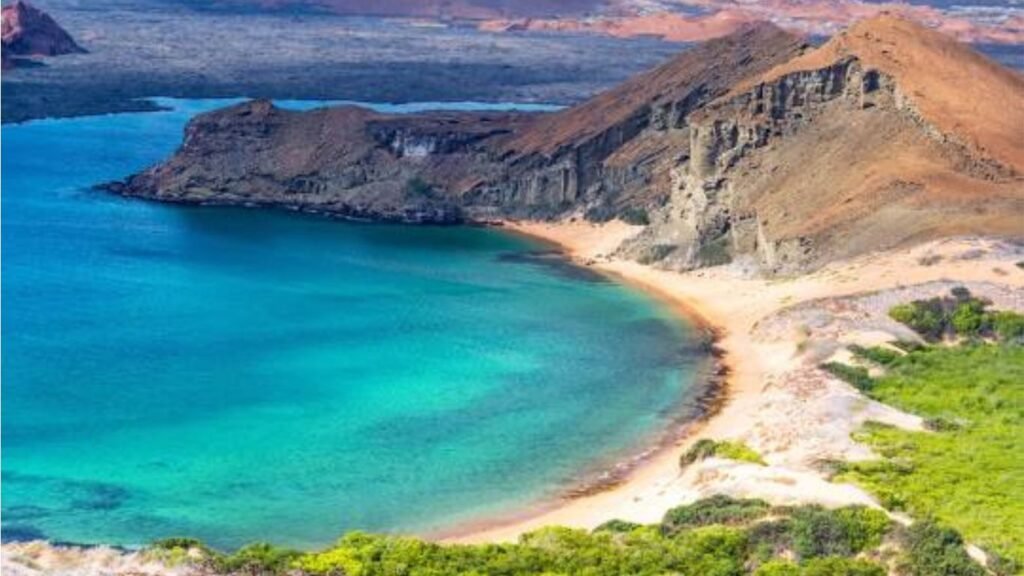
Located 1,000 kilometers off Ecuador’s coast, the Galápagos Islands are a sanctuary for evolutionary science and endemic species. Each island in this volcanic archipelago is a unique biome: some are stark and barren with lava flows, while others teem with mangroves and birdlife.
Visit Isabela Island for snorkeling with sea turtles and reef sharks, or Santa Cruz for its Charles Darwin Research Station and giant tortoise reserves. The sheer tameness of the animals—sea lions lounging on benches, marine iguanas sunbathing undisturbed—is a testament to the islands’ isolation and strict conservation efforts.
Pro Tip: Consider a small-ship expedition cruise to visit multiple islands under the guidance of certified naturalists.
5. Torres del Paine, Chile
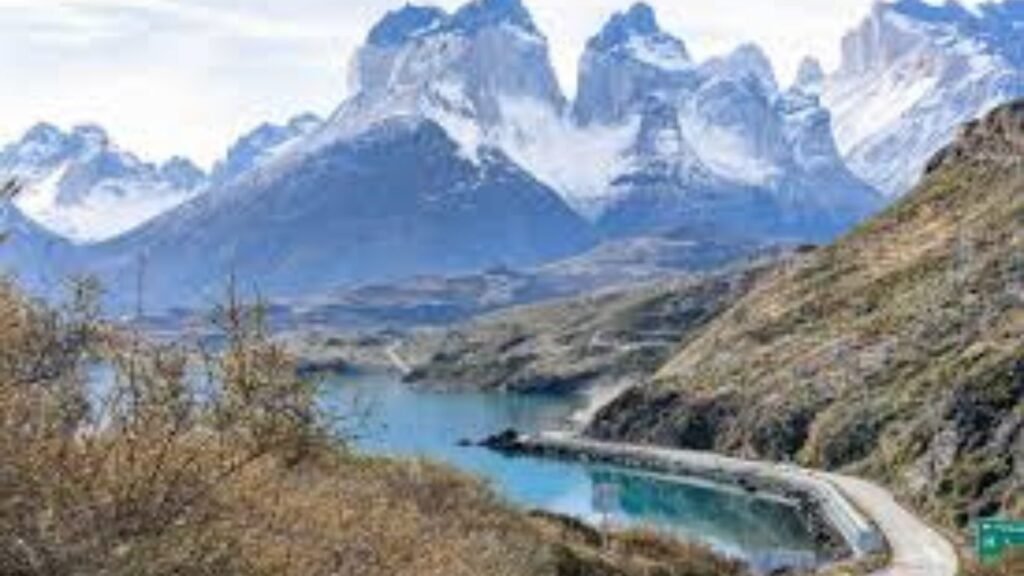
Few national parks in the world offer as varied and dramatic a landscape as Torres del Paine. Located in Chilean Patagonia, the park features ice-blue glaciers, jagged granite peaks, turquoise lakes, and windswept pampas where guanacos graze under the watch of distant condors.
Most visitors hike the W Trek, a 4-to-5-day route that passes the Grey Glacier, French Valley, and the namesake Torres towers. For a more immersive experience, the full O Circuit wraps around the park in 7 to 9 days. Comfortable eco-lodges and well-maintained trails make it suitable for adventurers of varying experience levels.
Climate Advisory: Patagonia is notoriously windy and weather changes rapidly. Pack layers and prepare for all four seasons in a single day.
6. Angel Falls, Venezuela
Hidden deep within the dense rainforests of Canaima National Park, Angel Falls (Salto Ángel) is the highest uninterrupted waterfall in the world—plunging 979 meters from the summit of a tabletop mountain called Auyán-tepui.
Accessing the falls is an adventure itself: most travelers fly from Caracas to Canaima, followed by a river trip through lush jungle and a steep trek to the base. The surrounding landscape, with its towering tepuis (flat-topped mountains), inspired the floating cliffs in Pixar’s Up.
Travel Reminder: Venezuela’s political situation can complicate travel logistics. Always consult travel advisories and arrange tours through established operators.
7. Geysers El Tatio, Chile
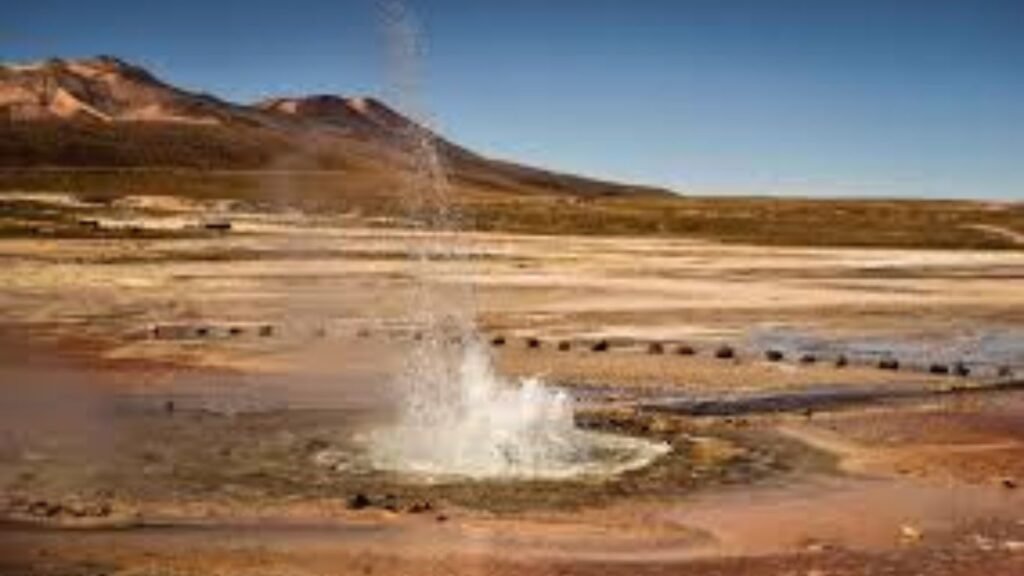
Located at over 4,300 meters above sea level in Chile’s Altiplano, El Tatio Geyser Field is one of the highest and most active geothermal fields on Earth. In the early morning, before the sun warms the air, plumes of steam erupt from the earth—sometimes reaching up to 10 meters—against a stark desert backdrop.
Tours depart from San Pedro de Atacama around 4:30 a.m. to reach the geysers by sunrise. Despite the early wake-up, the experience is magical—bundled in scarves and coats, you’ll watch geothermal power collide with the chill of dawn.
Caution: The altitude can be intense. Spend at least a day acclimating in San Pedro before making the trip.
8. Atacama Desert, Chile
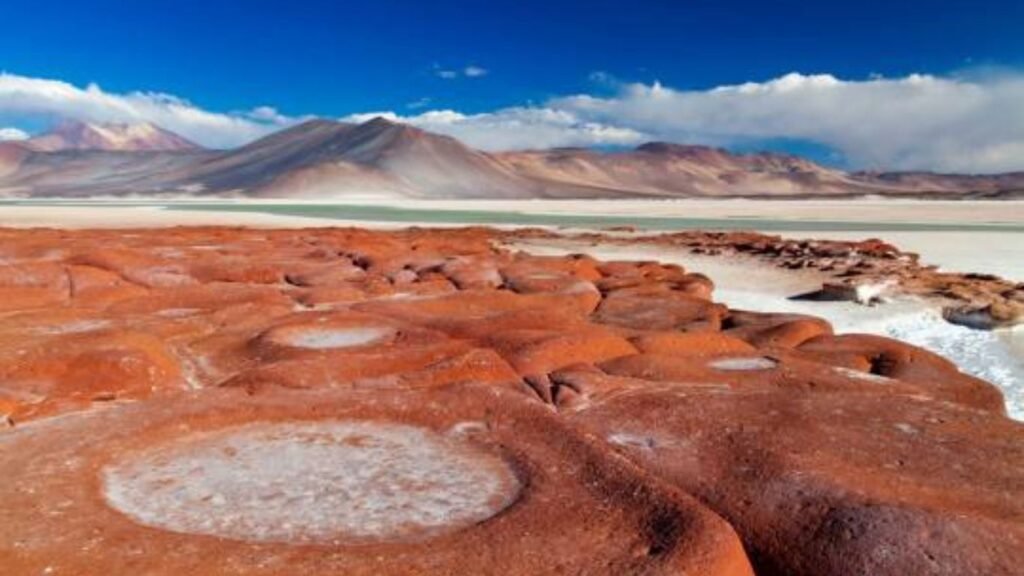
The Atacama Desert is the driest non-polar desert on Earth, yet it teems with visual wonder. Here, you’ll find salt flats, flamingo-dotted lagoons, surreal rock formations, and valleys that resemble the surface of Mars. The Valle de la Luna (Valley of the Moon) at sunset is particularly mesmerizing, as colors shift from gold to crimson to violet.
At night, the desert becomes one of the best stargazing locations on the planet, thanks to its high altitude, low humidity, and minimal light pollution. Telescopic tours and observatory visits are must-dos.
Did You Know? NASA has tested Mars rovers in the Atacama due to its extreme, Mars-like conditions.
9. Iguassu Falls, Argentina & Brazil
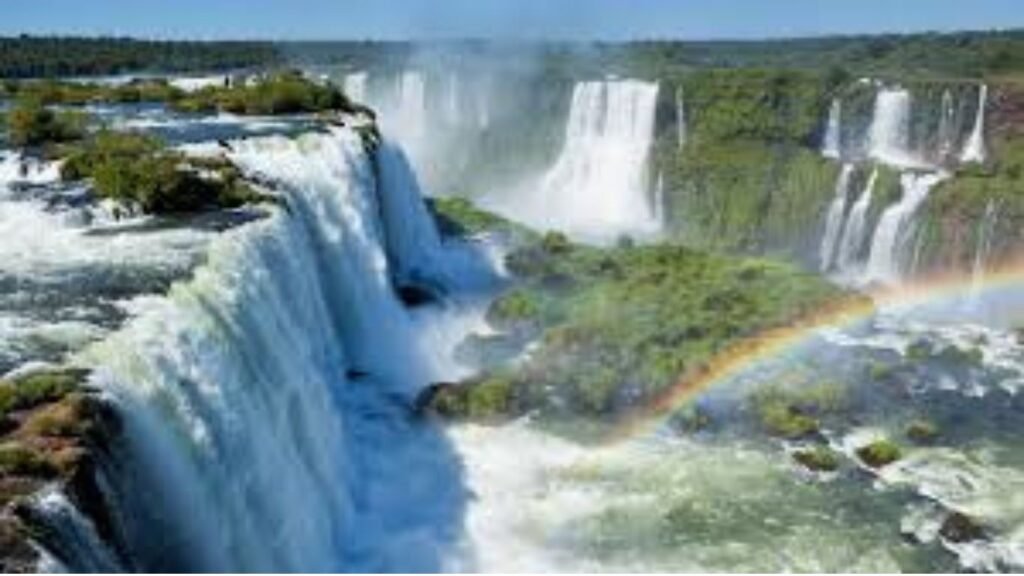
With 275 distinct waterfalls spread across nearly 3 kilometers, Iguassu Falls is a monumental expression of natural power. The thunderous cascades straddle the border of Argentina and Brazil and are best experienced from both sides.
- The Brazilian side offers panoramic views from walkways and observation decks.
- The Argentinian side lets you get close enough to feel the spray—especially at the Garganta del Diablo (Devil’s Throat), the most powerful section.
Pro Tip: A helicopter ride from the Brazilian side provides an unforgettable aerial perspective.
10. Sail to Antarctica from Ushuaia

Though technically not part of South America, Antarctica is often accessed via Ushuaia, the world’s southernmost city in Argentina. Small expedition ships cross the Drake Passage to reach the frozen continent—an awe-inspiring journey where travelers witness icebergs, glaciers, and colonies of emperor penguins.
A voyage here is not only a brag-worthy adventure—it’s a profound reminder of Earth’s fragile beauty. It’s the perfect add-on for those already exploring southern Patagonia.
11. See the Milky Way over Lake Titicaca, Peru

High in the Andes at 3,812 meters, Lake Titicaca is the world’s highest navigable lake and a cradle of ancient Andean civilization. Its mirror-like surface and clear mountain air make it a prime location for stargazing.
On Amantani Island, a community-run homestay offers cultural immersion and uninterrupted views of the night sky. As darkness falls, the Milky Way stretches overhead like a river of light—a truly humbling experience.
Cultural Insight: According to Incan mythology, the sun god Inti rose from Lake Titicaca, making it a sacred site in Andean cosmology.
Historical and Cultural Treasures
South America’s cultural tapestry is rich, ancient, and deeply layered. This continent has birthed civilizations that rivaled the great empires of history and nurtured traditions that still resonate in its languages, architecture, festivals, and everyday life. The interplay of indigenous heritage with colonial influences has produced places where time feels suspended—where myth and memory coexist in stone streets, sacred valleys, and vibrant cities.
The destinations below offer more than sightseeing—they are portals into South America’s soul, where past and present intertwine in unforgettable ways.
12. Santuario de las Lajas, Colombia
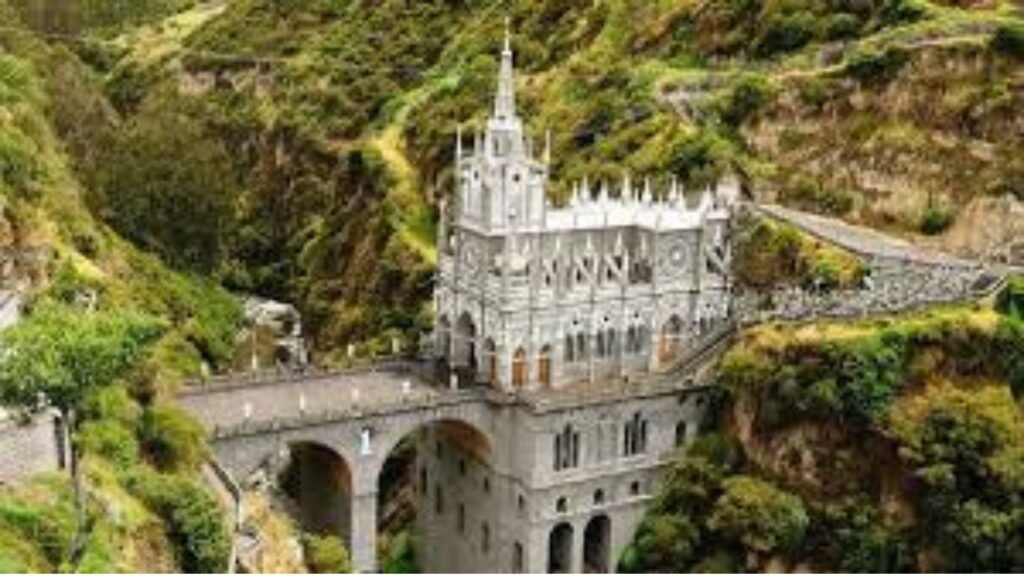
Tucked into a dramatic gorge in southern Colombia, the Santuario de las Lajas is one of the continent’s most awe-inspiring and unexpected marvels. Built between 1916 and 1949, this neo-Gothic basilica bridges a canyon carved by the Guáitara River, its towering spires and stone facade appearing to rise from the cliffs themselves.
According to legend, the Virgin Mary appeared on a stone slab here in the 18th century, miraculously curing a deaf-mute girl. That slab now serves as the altar, and the basilica has become both a place of pilgrimage and a symbol of divine artistry.
Don’t Miss: The nearby museum and scenic cable car ride down into the gorge, offering sweeping views of the church’s position against the mountainside.
13. Machu Picchu, Peru

No list of South American wonders is complete without Machu Picchu—the “Lost City of the Incas.” Perched at 2,430 meters in the Andes, this 15th-century citadel was never discovered by Spanish conquistadors and remained unknown to the outside world until 1911.
Its perfectly cut granite stones, terraced slopes, and astronomical alignments reveal a level of engineering and spiritual insight that continues to astound. The classic Inca Trail trek offers the most immersive route, arriving at the Sun Gate at dawn to witness the ruins bathed in golden light. Alternatively, the scenic train journey from Cusco via Aguas Calientes makes the site accessible to all travelers.
Traveler’s Tip: Entrance tickets now require advance booking, and visitor numbers are capped—plan your trip well ahead of time, especially in peak months (May to September).
14. Moai Statues on Easter Island, Chile

Remote and mysterious, Easter Island—or Rapa Nui—lies more than 3,500 kilometers west of mainland Chile in the South Pacific. Its windswept landscape is dotted with nearly 900 moai statues, monumental stone figures carved by the island’s Polynesian settlers between the 13th and 16th centuries.
The moai, many of which stand in solemn rows facing inland, represent deified ancestors whose spiritual essence was believed to protect their communities. Sites like Ahu Tongariki, with 15 restored statues, and the quarry at Rano Raraku, where moai remain frozen mid-carving, offer profound insight into this ancient culture’s ingenuity and decline.
Cultural Note: Respect for Rapa Nui’s heritage is paramount. Travel responsibly and support local initiatives that preserve the island’s traditions.
15. The Sacred Valley, Peru

Nestled between Cusco and Machu Picchu, the Sacred Valley of the Incas is a lush corridor of agricultural terraces, ancient ruins, and Andean villages. Once the heartland of the Inca Empire, it remains fertile and deeply spiritual.
Highlights include the salt pans of Maras, used since pre-Inca times; the ruins of Ollantaytambo, a fortress and ceremonial center still bearing battle scars from the Spanish conquest; and Pisac, known for its market and mountaintop temples.
Immersive Experience: Stay in a family-run guesthouse in Urubamba or Chinchero to engage with Quechua-speaking communities and participate in traditional weaving or farming practices.
16. Cusco, Peru

Once the capital of the Inca Empire, Cusco is a city where empires overlap. Spanish colonial buildings sit atop precise Inca stone foundations, and narrow cobbled lanes lead to hidden courtyards, baroque churches, and vibrant markets.
Visit the Qorikancha, once the most sacred temple in the Inca world, now partially housed within a Dominican convent. Explore the lively San Pedro Market, a feast of colors, scents, and sounds offering everything from quinoa to handmade alpaca wool goods.
Altitude Tip: Cusco sits at 3,400 meters—take time to acclimate, drink coca tea, and avoid strenuous activity for the first day.
17. La Paz, Bolivia
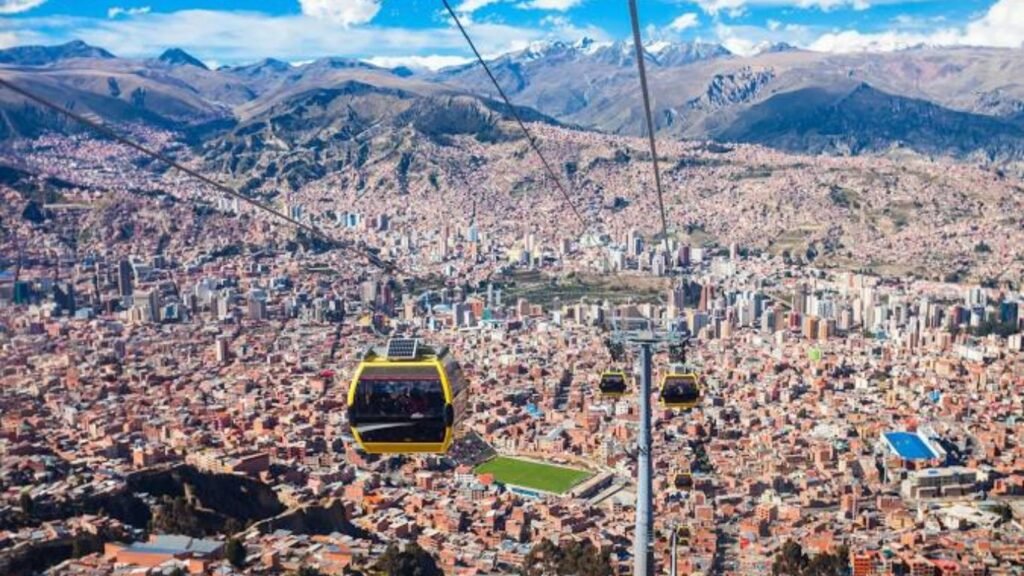
At nearly 3,700 meters above sea level, La Paz is the highest administrative capital in the world—and one of its most unique. The city sprawls dramatically across a bowl-shaped canyon, with El Alto towering above and the Illimani Mountain framing the horizon.
A ride on the city’s Mi Teleférico cable car network offers stunning aerial views and easy access between neighborhoods. Visit the Witches’ Market for herbal remedies and spiritual artifacts, or explore Valle de la Luna, a bizarre lunar-like landscape on the city’s outskirts.
Fascinating Fact: Bolivia officially recognizes 36 indigenous languages—La Paz is a crossroads of Aymara, Quechua, and mestizo traditions.
18. Cartagena, Colombia

A jewel of the Caribbean, Cartagena de Indias enchants visitors with its colonial charm, coastal flair, and rhythmic vibrancy. Founded in 1533, the city’s historic walled center—Ciudad Amurallada—is a UNESCO World Heritage Site, filled with colorful facades, cobblestone alleys, and flower-laden balconies.
By day, explore Castillo San Felipe de Barajas, the most formidable Spanish fortress in the Americas. By night, salsa spills onto the streets from open-air cafés and plazas. Just offshore, the Rosario Islands provide a tropical retreat with snorkeling and coral reefs.
Best Time to Visit: December to April is dry and lively, but shoulder seasons (May and November) offer fewer crowds and better deals.
19. Buenos Aires, Argentina
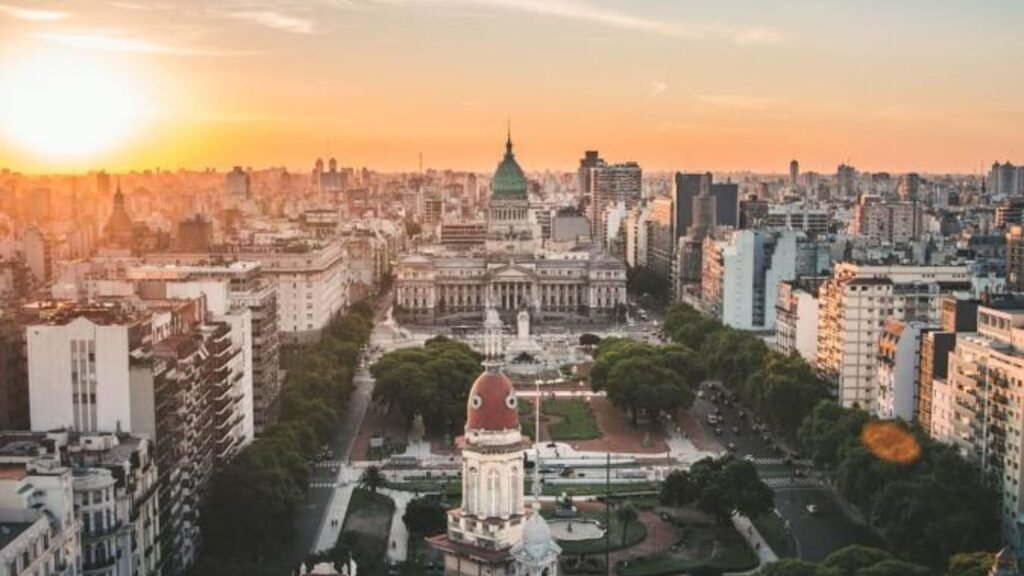
Elegant and expressive, Buenos Aires is where old-world sophistication meets Latin American soul. The city pulses with culture—tango is not a performance here, but a lifestyle. In San Telmo, couples dance in cobbled plazas beneath wrought-iron balconies. In La Boca, street murals explode with color and political commentary.
Don’t miss a performance at the Teatro Colón, one of the world’s top opera houses. And for culinary indulgence, nothing compares to an Argentine asado—a ritual of grilled meats and Malbec shared among friends.
Local Tip: Wander the weekend markets in Recoleta and Palermo Soho for artisanal crafts, antiques, and Buenos Aires’ creative pulse.
20. Santiago, Chile
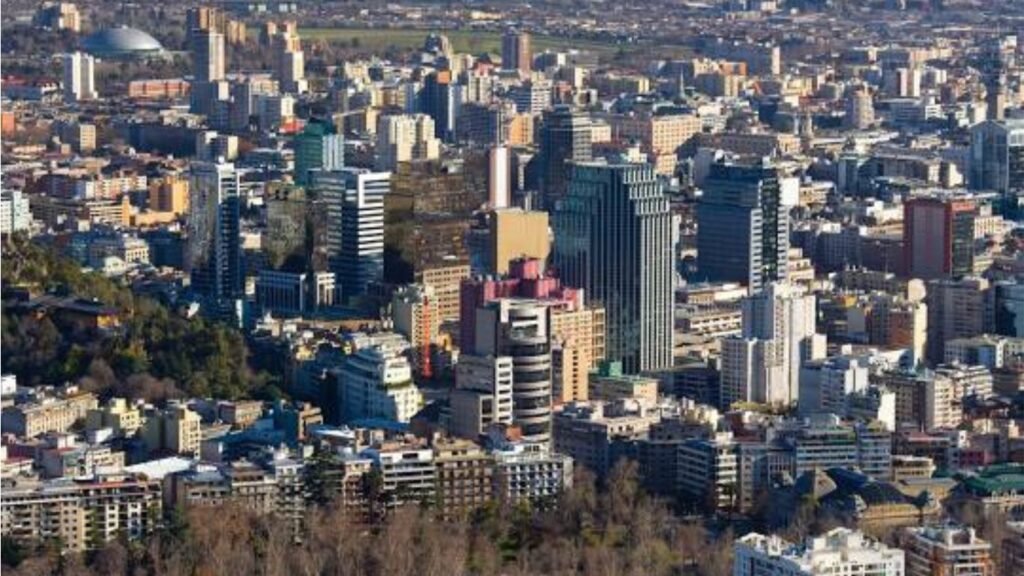
Framed by the Andes and home to more than six million people, Santiago is Chile’s dynamic capital—modern yet steeped in history. Sleek high-rises stand beside colonial cathedrals; chic wine bars share streets with traditional picadas (local eateries).
Visit Cerro San Cristóbal for sweeping city views or La Chascona, Pablo Neruda’s quirky hilltop home. Santiago is also a gateway to some of Chile’s best excursions: the Maipo Valley wine region, the surfing beaches of Viña del Mar, and the colorful chaos of Valparaíso are all nearby.
Perfect Pairing: Combine Santiago with a trip to Patagonia or Atacama for a rich contrast of urban culture and wilderness.
Thrilling Adventures and Unique Experiences
While South America is famed for its natural wonders and ancient heritage, it also offers some of the world’s most exhilarating adventures. From gravity-defying bike rides to surreal jungle experiences, this continent serves up heart-racing thrills for every kind of explorer. But these aren’t just adrenaline fixes—they’re unforgettable encounters that leave you with stories etched into your soul.
Whether you’re swinging into a cloud forest or walking among treetops in the Amazon, here are three of the continent’s most unforgettable adventure experiences.
21. The World’s Most Dangerous Road, Bolivia
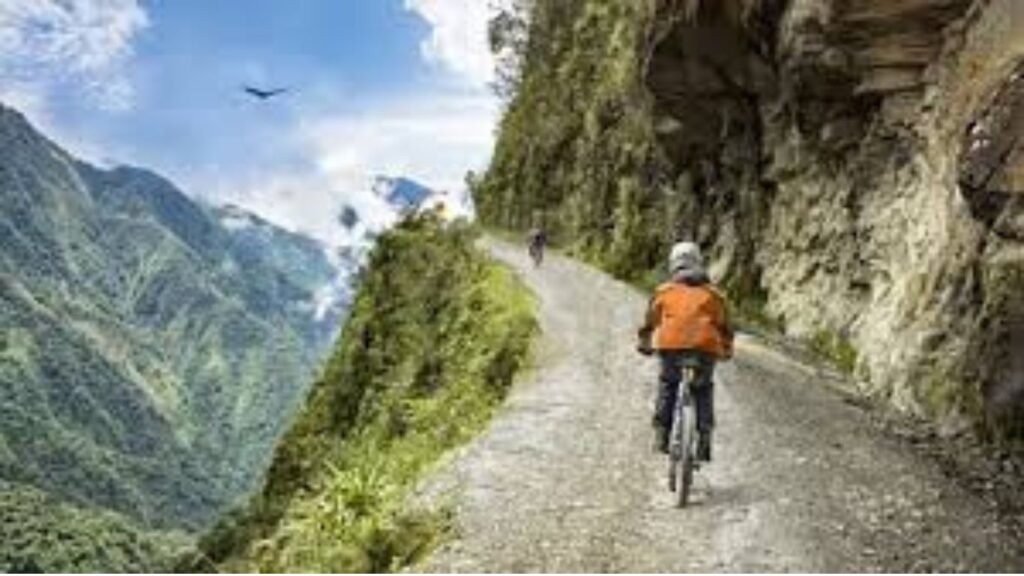
Officially known as the North Yungas Road, this notorious route from La Paz to Coroico is often dubbed “Death Road” for a reason. For decades, it claimed hundreds of lives annually due to its narrow lanes, sheer cliffs, and unpredictable weather. But today, with a newer highway rerouting most traffic, the old road has become a pilgrimage site for adrenaline-loving mountain bikers.
The journey begins at La Cumbre Pass (4,650 meters), often blanketed in mist, and descends nearly 3,600 meters through shifting climates—from icy mountaintops to steamy jungle valleys. You’ll ride past cascading waterfalls, roadside crosses, and cliffside views that are as terrifying as they are breathtaking.
Safety Note: Choose a reputable tour company that provides full-suspension bikes, protective gear, and experienced guides. Despite the nickname, the road is relatively safe for those prepared.
Why Do It? This ride isn’t just a thrill—it’s a journey through Bolivia’s dramatic geography and a test of mental grit.
22. Swing at the End of the World in Baños, Ecuador
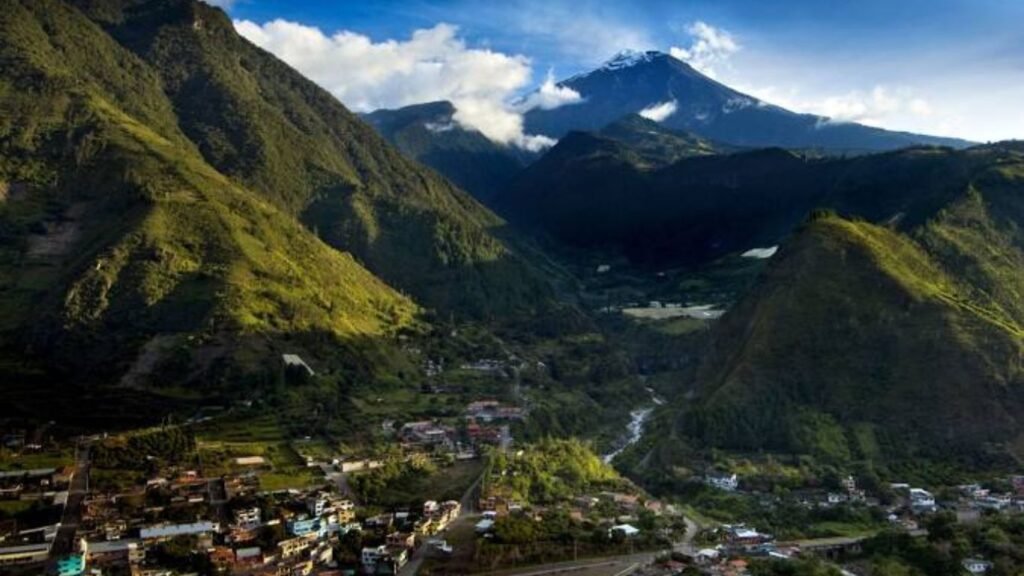
High in the Ecuadorian Andes, near the volcanic town of Baños de Agua Santa, there’s a modest treehouse perched on a ridge with a swing that captures imaginations worldwide. Dubbed the “Swing at the End of the World,” this unassuming seat suspended from La Casa del Árbol flings you out over a vast abyss, with the smoking Tungurahua Volcano rising dramatically in the background.
It’s not mechanically driven—just gravity and momentum. But what makes it unforgettable is the sensation of soaring freely into the clouds, with nothing but the valley below. The treehouse itself is a seismic monitoring station, still staffed by locals keeping watch over the region’s volcanic activity.
Pro Tip: Visit early in the morning for the clearest views, and bring a jacket—it gets chilly at 2,600 meters.
Bonus Adventures in Baños: Zip-lining across canyons, canyoning down waterfalls, and soaking in thermal baths make this town one of Ecuador’s top adventure hubs.
23. Canopy Walk, The Amazon, Peru
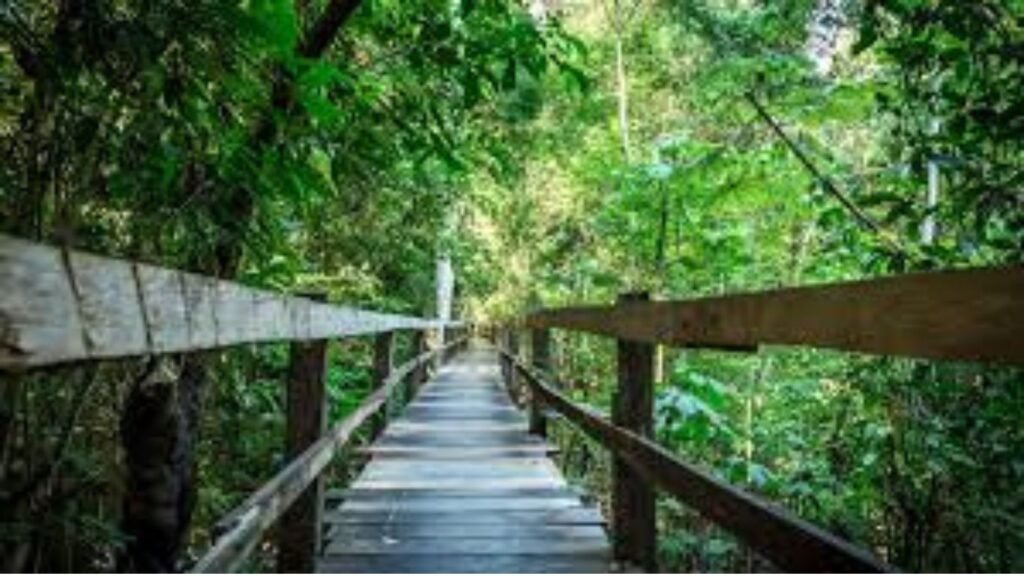
Most people experience the Amazon from below—paddling through rivers or trekking forest floors. But in northern Peru’s rainforest, near Iquitos, you can rise above it all on one of the world’s longest canopy walkways, suspended more than 35 meters above the jungle floor.
Built to facilitate research at the ACTS Field Station, the walkway stretches over 500 meters and connects more than a dozen platforms across ancient ceiba and ficus trees. Up here, you’ll enter an entirely different ecosystem—home to colorful toucans, howler monkeys, and vibrant orchids.
The forest hums differently at this height. It’s quieter, lighter, and feels somehow more ancient. Guided walks at dawn or dusk are particularly magical, as the sky shifts and the forest awakens or settles into night.
Conservation Connection: Staying at lodges that support local communities and scientific research ensures your adventure contributes to rainforest protection.
Vibrant City Life
While South America dazzles with its wild landscapes and ancient ruins, its cities pulse with an energy all their own. These urban centers are cultural crossroads—places where colonial facades meet street art, gourmet cuisine fuses with traditional flavors, and every plaza is a stage for daily life. The continent’s cities aren’t just backdrops to adventure—they are destinations rich with rhythm, color, and soul.
Here are two cities where the heartbeat of South America is impossible to ignore.
24. Valparaíso, Chile
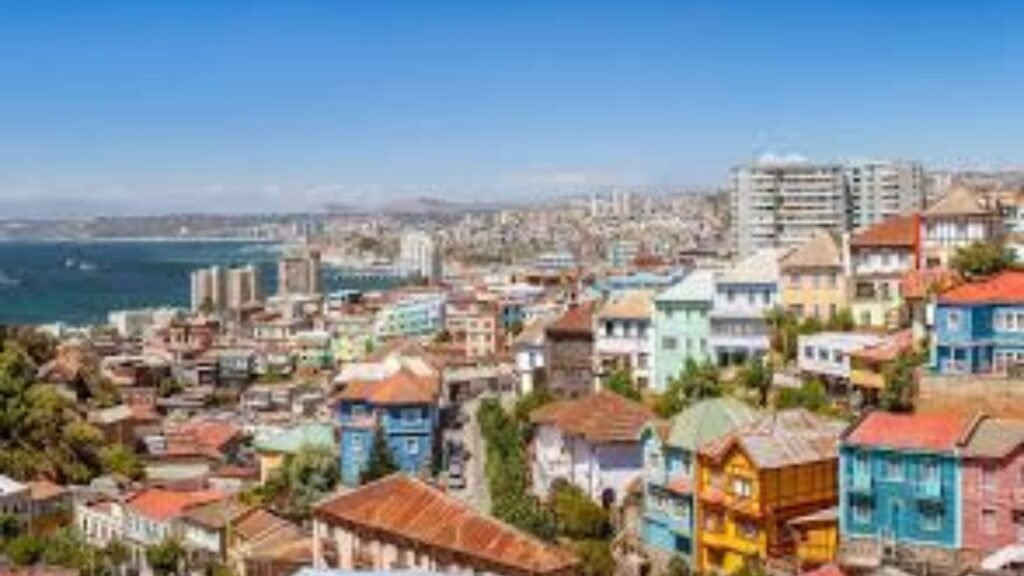
Perched on the Pacific coast and layered across 42 steep hills, Valparaíso is Chile’s most artistic and bohemian city. Once a bustling seaport known as the “Jewel of the Pacific,” its fortunes faded after the Panama Canal rerouted maritime traffic. But its creative soul never dimmed. Today, it thrives as a cultural capital where murals explode across centuries-old walls and ideas stretch as high as the funiculars that climb its hills.
The historic quarter, declared a UNESCO World Heritage Site, is a labyrinth of winding alleys, staircases, and cliffside homes painted in every imaginable color. This urban canvas serves as a living gallery—Cerro Alegre and Cerro Concepción are especially famous for their street art.
Step inside the house of Pablo Neruda—La Sebastiana—for a glimpse into the life of Chile’s Nobel laureate. Explore local cafés, independent bookstores, and artisan markets. At night, jazz clubs and coastal bars keep the spirit alive with music and conversation.
Local Insight: Take a graffiti tour with a local guide to understand the deeper political and poetic layers of Valparaíso’s artwork.
25. Rio de Janeiro, Brazil

Few cities in the world blend natural beauty and urban charisma as seamlessly as Rio de Janeiro. Cradled between lush granite mountains and golden beaches, Rio is Brazil’s crown jewel—a city of soaring samba, spiritual energy, and celebratory life.
Start at the top: Christ the Redeemer, perched atop Corcovado Mountain, stands as one of the New Seven Wonders of the World. From here, the city unfolds in all directions—sugar-white sands of Copacabana and Ipanema, the deep greens of the Tijuca Forest, and the iconic Sugarloaf Mountain rising from the sea.
But Rio is more than its postcards. It’s in the neighborhoods of Lapa, where arches light up with music at night, and in the hillside favelas, where community-led tours reveal layers of resilience and pride. It’s in the rhythm of Carnival and the everyday rituals of futebol and beachside cafés.
Travel Tip: For an immersive local experience, explore Rio by bike—especially the shoreline routes connecting Flamengo Park to Ipanema.
Hidden Gems of South America
Beyond the world-famous icons and tourist circuits lies a quieter South America—one shaped by untouched nature, preserved colonial beauty, and local traditions that haven’t bent to the modern rush. These hidden gems may not dominate travel brochures, but they reward those willing to stray off the beaten path with authenticity, intimacy, and unexpected magic.
Whether you’re craving solitude in nature or a place where history lingers on cobblestones, these destinations reveal the softer, more soulful side of the continent.
26. Tayrona National Park, Colombia
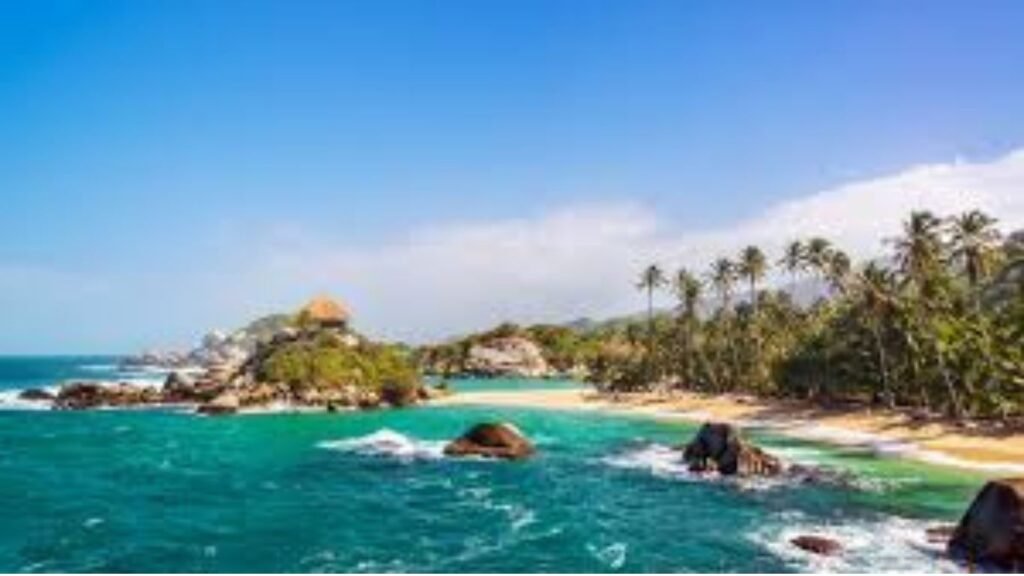
Tucked between the Sierra Nevada mountains and the Caribbean Sea, Tayrona National Park is Colombia’s most enchanting coastal escape. Its appeal lies in its contrasts—jungle-fringed trails that open onto crescent-shaped beaches, boulder-strewn shores where waves crash like thunder, and secluded coves ideal for a quiet swim or snorkeling adventure.
To reach the park’s interior beaches like Cabo San Juan, travelers must hike through lush tropical forest, crossing paths with monkeys, toucans, and butterflies. Along the way, sacred indigenous sites serve as reminders that this land has long been revered by the Kogi, Arhuaco, and Tairona peoples—many of whom still call the region home.
Stay Experience: Visitors can camp, sleep in hammocks under the stars, or stay in eco-lodges tucked into the jungle. Each choice offers a different way to experience the natural rhythm of the Caribbean wilderness.
Essential Tip: Book in advance—visitor numbers are capped to protect this fragile ecosystem, especially during holiday periods.
27. Colonia del Sacramento, Uruguay
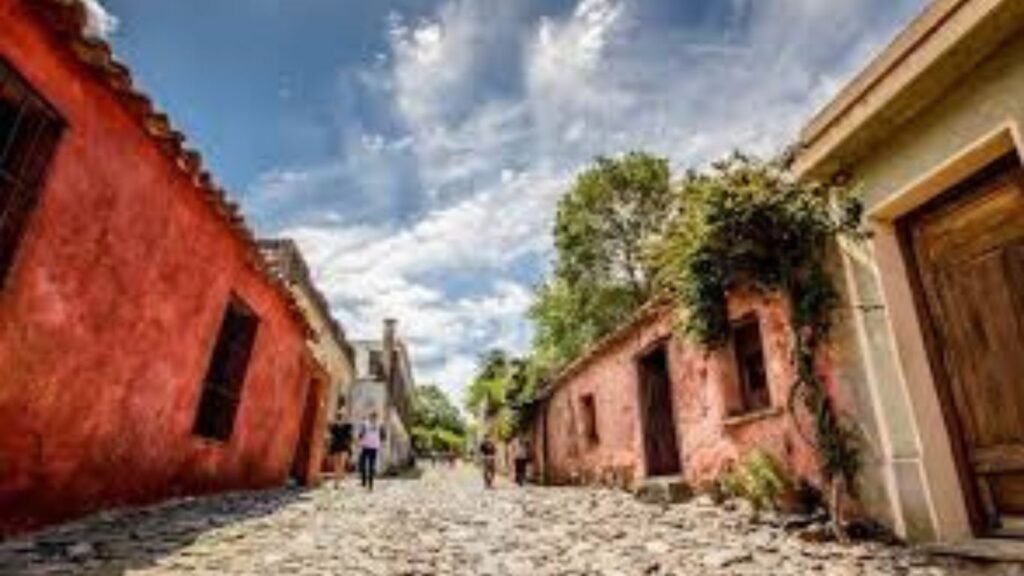
A world away from South America’s sprawling metropolises, Colonia del Sacramento is a gentle coastal town where the past seems to linger in the salty air. Located on the banks of the Río de la Plata, just a short ferry ride from Buenos Aires, Colonia enchants with its preserved Portuguese and Spanish colonial architecture, cobbled lanes, and peaceful plazas.
Founded in 1680, Colonia’s historic quarter—now a UNESCO World Heritage Site—invites slow exploration. Lantern-lit streets wind past ivy-covered houses, boutique galleries, and antique cars that appear frozen in time. Climb the lighthouse for sweeping views over terracotta rooftops and the estuary beyond.
Cultural Charm: Life here moves at a different pace. Sit at a café in Plaza Mayor, sip on mate or local Tannat wine, and watch time drift with the breeze. It’s the perfect destination for travelers seeking quiet romance, cultural depth, and riverside serenity.
Planning Your South American Adventure
Exploring the 27 Best Places to Visit in South America is an unforgettable journey—but one that requires thoughtful preparation. This vast and diverse continent offers everything from high-altitude treks to tropical coastlines, and navigating it successfully depends on smart logistics. From choosing the right season to packing with purpose, planning ahead can make the difference between a stressful trip and a seamless, enriching experience. Whether you’re charting a two-week itinerary or a multi-country adventure, the guidance below will help you travel deeper and more confidently in 2025.
When to Visit
South America spans the equator to the subpolar south, so seasons and climates vary drastically. Your best travel window depends entirely on where you’re going and what you want to do:
- Andes & Amazon (Peru, Ecuador, Bolivia, Colombia)
- Best Time: May to October (dry season)
- Why: Easier trekking, lower humidity, fewer mosquitoes in the jungle.
- Patagonia & Southern Chile/Argentina
- Best Time: November to March (austral summer)
- Why: Longer daylight hours, open trails, more wildlife sightings.
- Brazil & Atlantic Coast
- Best Time: September to April
- Why: Warm weather for beach life, festivals like Carnival (February/March).
- Galápagos Islands
- Best Time: December to May
- Why: Calmer seas, richer marine activity, ideal for snorkeling.
Insider Tip: Traveling during shoulder seasons (April–May or October–November) offers fewer crowds and better prices, with only slight trade-offs in weather.
Visas and Entry Requirements
Visa requirements in South America are generally traveler-friendly, but they vary by nationality:
- Visa-Free Entry (up to 90 days) is granted to citizens from the EU, UK, U.S., Canada, Australia, and most of Asia for countries like Peru, Chile, Colombia, and Argentina.
- Brazil reinstated visa requirements for U.S., Canadian, and Australian travelers starting 2025—apply in advance online or through the consulate.
- Yellow Fever Vaccination may be required for entry into some countries (like Brazil) or specific jungle regions. Carry your international vaccination card if applicable.
Travel Advisory: Always double-check visa policies through official government websites or embassies. Rules can change quickly.
Getting Around
South America is immense and varied, with both modern and rustic transportation options:
- Air Travel: Budget airlines (LATAM, Sky, JetSmart, Gol) connect major cities at competitive prices. Book early for peak season.
- Buses: In countries like Argentina, Chile, and Brazil, long-distance buses are clean, safe, and surprisingly luxurious (think fully reclining seats and meal service).
- Colectivos and Combis: These shared minivans offer cheap, fast transport between towns in places like Peru and Bolivia.
- Rail: Limited but scenic. Consider the Tren Crucero in Ecuador or the Belmond Andean Explorer for luxury train travel in Peru.
Navigation Tip: Download offline maps (like Maps.me) and use WhatsApp—it’s the dominant communication tool across Latin America.
Budgeting and Daily Costs
Your daily expenses will depend on your travel style and the countries you’re visiting. Here’s a rough breakdown:
- Budget (Backpackers): $30–$50/day
Dorms, street food, local buses. - Mid-Range (Comfort + Culture): $60–$120/day
Boutique stays, guided tours, domestic flights. - Luxury (Full-Service + Style): $200+/day
Upscale lodges, private excursions, fine dining.
Some of the cheapest countries to travel include Bolivia, Ecuador, and Peru, while Brazil, Chile, and Argentina tend to be more expensive—especially in major cities.
Money Tips:
- Cash is still king in rural areas.
- ATMs are widely available but may charge withdrawal fees.
- Always carry small bills, especially for taxis and markets.
Languages and Connectivity
- Spanish is spoken across most of South America, while Portuguese is the official language of Brazil.
- English is limited outside major tourist areas, so learning a few basic phrases or using a translation app will make your journey smoother.
Connectivity:
Wi-Fi is common in urban areas, but rural zones can be spotty. Consider buying a local SIM card for data access (Claro, Movistar, and Vivo are major carriers). eSIM options are increasingly available for short-term travelers.
Health & Safety
- Altitude Sickness can affect visitors in highland cities like Cusco, La Paz, and Quito. Acclimate gradually, drink coca tea, and avoid alcohol early on.
- Water Safety: Tap water is not potable in most countries. Carry a water filter or buy bottled water.
- Common Scams: Stay alert in tourist zones for petty theft, especially in bus terminals and crowded markets. Use a cross-body bag and avoid flashing valuables.
Emergency Numbers:
- General: 911 (works in several countries)
- Peru: 105 (police)
- Brazil: 190
- Chile: 133
Smart Move: Register with your embassy before travel and save the nearest consulate’s contact information.
FAQ: Planning a Trip to South America in 2025
What is the safest country to visit in South America?
Uruguay consistently ranks as one of the safest countries on the continent, known for its stability, low crime rate, and welcoming locals. Chile also offers reliable infrastructure and a strong sense of public security, especially in tourist areas. However, no matter where you travel, it’s crucial to stay alert in crowded places and follow local safety advice.
How long should I spend exploring South America?
To truly absorb the diversity of South America, a minimum of 3 to 4 weeks is recommended—especially if you’re visiting more than one country. For single-country trips (like Peru, Argentina, or Colombia), 10 to 14 days can be ideal for experiencing both city life and natural wonders. Long-term travelers often spend several months moving through the continent at a relaxed pace.
Is it expensive to travel around South America?
Travel costs vary greatly by country and travel style. Bolivia, Peru, and Ecuador are extremely affordable for backpackers, while Brazil, Chile, and Argentina can be more expensive—especially in large cities. A mix of local transportation, budget accommodations, and street food can keep costs low. On average:
- Budget travelers: $30–$50/day
- Mid-range travelers: $60–$120/day
- Luxury travelers: $200+/day
Do I need to speak Spanish or Portuguese to travel in South America?
It’s not required—but highly recommended. While English is spoken in tourist hubs, much of the continent remains non-English-speaking. A basic grasp of Spanish or Portuguese will vastly improve your interactions and ability to navigate. Apps like Google Translate or Duolingo can help bridge the gap, and locals generally appreciate any effort to speak their language.
What’s the best way to get between countries in South America?
For long distances, regional flights are your most efficient option—especially for crossing borders in the Andes or Amazon. Budget airlines like LATAM, Sky Airline, and Gol operate regular routes. For overland travel, long-distance buses offer a cost-effective and scenic way to move between neighboring countries, particularly in southern regions like Argentina and Chile.
Do I need vaccinations before visiting South America?
Yes. It’s advisable to have routine vaccinations up to date, and many areas—especially Amazonian regions—recommend or require Yellow Fever vaccination. Other commonly advised vaccinations include Hepatitis A & B, Typhoid, and Rabies (for long stays or rural travel). Consult a travel clinic at least 6–8 weeks before departure.
Can I use credit cards and digital payments in South America?
Yes, in most urban centers and tourist destinations, credit cards and digital payments (like Apple Pay, Google Pay, or Mercado Pago) are accepted. However, cash remains essential in rural areas, markets, and small eateries. Always carry some local currency, and notify your bank of your travel plans to avoid card blocks.
Is South America a good destination for solo travelers?
Absolutely. South America has a strong backpacking network, vibrant hostel culture, and friendly locals. Popular routes like the Gringo Trail make it easy to meet fellow travelers. However, solo travelers should exercise common sense—avoid walking alone at night, secure valuables, and research neighborhoods before booking accommodations.
What are the top three must-see places in South America?
Though it’s hard to choose just three, these are widely considered life-changing destinations:
- Machu Picchu, Peru – A masterwork of Inca engineering and mystical mountain energy.
- Iguassu Falls, Argentina/Brazil – A thunderous force of nature unmatched in scale and beauty.
- Galápagos Islands, Ecuador – A rare window into evolution and wildlife unlike anywhere else on Earth.

